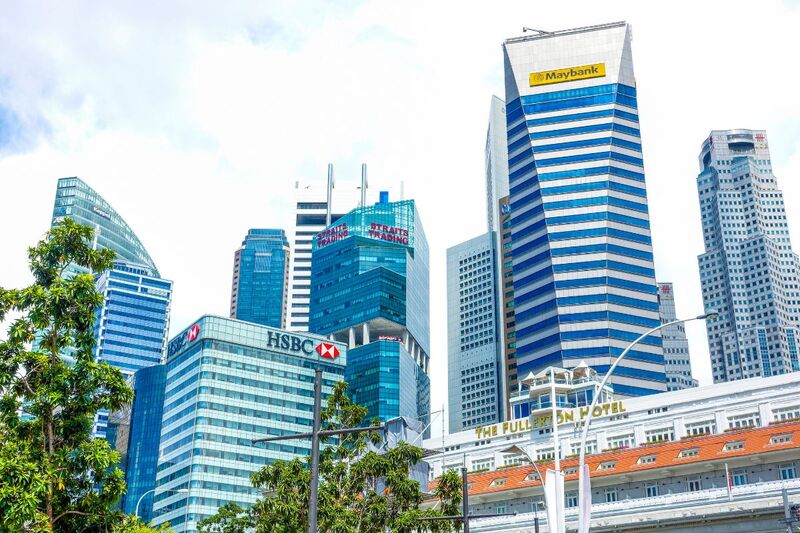Living and Working in Singapore – The Complete Guide for Japanese Professionals

Singapore is one of the most popular destinations for professionals and families relocating from Japan, with over 32,000 Japanese residents living here today. This community benefits from strong schools, healthcare, and cultural networks — but also faces high living costs and practical challenges when settling in. This article complements our Ultimate Guide to Living & Working in Singapore (Japan Edition) — a comprehensive relocation resource for professionals and families.
This blog is part of Reeracoen’s Expat Living Series, highlighting what international professionals need to know when moving to Singapore, starting with the Japanese community. While this article focuses on professionals relocating from Japan, its guidance is also relevant to any international talent moving to Singapore.
Housing and Location
Singapore’s MRT network already covers 240 km with over 140 stations, with plans to put 80% of households within a 10-minute walk of a station by the early 2030s. MRT access should be the top priority for newcomers.
Popular areas include:
- East Coast: Seaside lifestyle, close to schools.
- River Valley & Orchard: Central, walkable.
- Queenstown & Buona Vista: Family-friendly with good access to science parks.
- Tanjong Pagar & Outram: CBD-adjacent, vibrant dining scene.
Education and Families
The Japanese School Singapore (JSS) is one of the largest outside Japan, alongside Waseda Shibuya High School. Many expats also choose leading international schools like UWCSEA and Dulwich. For younger children, ECDA-accredited childcare centres accept infants from two months onwards.
Healthcare and Insurance
Singapore healthcare is high quality but costly without insurance — bills can be 3–5x higher for foreign professionals. Public hospitals (SGH, NUH) are excellent, and Japanese-speaking clinics are available. Always secure insurance before arrival.
Everyday Essentials
- Payments: Over 90% of companies use PayNow, but cash is still widely accepted.
- Groceries: NTUC, Cold Storage, and Japanese supermarkets like Don Don Donki.
- Food: Hawker meals average SGD $4–6.
- Transport: SimplyGo cards, Grab/Gojek, and extensive cycling networks.
- Climate: Hot and humid — carry an umbrella and a light jacket.
Community and Lifestyle
- JAS & JCCI support integration.
- Online groups (Facebook, LINE) are helpful for quick tips.
- Leisure includes Gardens by the Bay, Sentosa, and weekend trips to Johor Bahru, Bintan, or Batam.
FAQs
Q1. Is Singapore suitable for Japanese families?
Yes. It’s one of Asia’s safest cities with strong schools, healthcare, and communities.
Q2. How important is living near MRT?
Very. The MRT system is reliable and expanding, making commute efficiency essential.
Q3. Is Singapore fully cashless?
Not yet. PayNow and QR dominate, but cash is accepted everywhere.
Q4. What should employers provide for relocating staff?
Temporary housing, onboarding clarity, healthcare coverage, and school/community support.
Start Your Singapore Journey with Confidence
📖 Download the Ultimate Guide for Japanese Living & Working in Singapore:
From housing and schools to food and healthcare, get the complete relocation playbook. [Download the Guide]
Looking for personalised guidance?
For Candidates (professionals & families relocating to Singapore): Get bilingual career and relocation support. [Book a free consultation]
For Employers (welcoming international staff): Build a strong onboarding plan. [Talk to our Japan Desk]
✅ Final Author Credit
By Valerie Ong (Regional Marketing Manager)
Published by Reeracoen Singapore — a leading recruitment agency in APAC.
References
- Land Transport Authority (LTA) – Rail Network & Expansion Plans
- Ministry of Manpower (MOM) – Foreign Workforce Numbers
- Mercer – Cost of Living City Ranking
- Infocomm Media Development Authority (IMDA) – Singapore Digital Economy Report
- Japanese Association Singapore (JAS) – Community Information

Disclaimer:
The information provided in our blog articles is intended for general informational purposes only. It is not a substitute for professional advice and should not be relied upon as such.
While we strive to provide accurate and up-to-date information, the ever-evolving nature of certain topics may result in content becoming outdated or inaccurate over time. Therefore, we recommend consulting with qualified professionals or experts in the respective fields for specific advice or guidance. Any actions taken based on the information contained in our blog articles are solely at the reader's discretion and risk. We do not assume any responsibility or liability for any loss, damage, or adverse consequences incurred as a result of such actions.
We may occasionally provide links to external websites or resources for further information or reference. These links are provided for convenience and do not imply endorsement or responsibility for the content or accuracy of these external sources. Our blog articles may also include personal opinions, views, or interpretations of the authors, which do not necessarily reflect the views of our organisation as a whole. We encourage readers to verify the accuracy and relevance of information presented in our blog articles and to seek professional advice when needed. Your use of this website and its content constitutes acceptance of this disclaimer.






